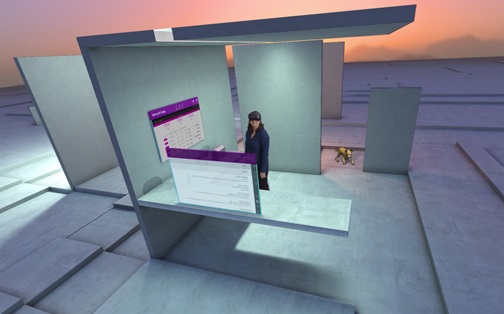Microsoft fleshes out its Windows 10 mixed-reality roadmap

At the Intel Developer Forum, Microsoft officials provided more details and a roadmap outlining some of the steps the company will take to open the Windows Holographic Platform to various "mixed reality" devices.

Microsoft is collaborating with Intel on a specification for "mixed-reality-ready" PCs and head-mounted displays (HMDs), said Windows and Devices Group chief Terry Myerson in an August 16 blog post. That spec will be the basis for Microsoft's hardware partners to build both consumer and business devices that can handle mixed reality.
The plan is for Microsoft, Intel and other partners to release version 1 of the spec at the Windows Hardware Engineering Community (WinHEC) conference in Shenzhen. (That conference is now slated for December 2016; an earlier leak had it pegged for the first week in November.)
IDF 2016
Microsoft plans to release "an update to Windows 10" next year -- I'm assuming as part of or maybe as an add-on to Redstone 2, expected to be available in spring 2017 -- that will "enable mainstream PCs to run the Windows Holographic shell and associated mixed reality and universal Windows applications," Myerson also said in today's post.
Microsoft officials said in June at Computex that the company wasn't just limiting the Windows 10 variant tuned to work with HoloLens -- known as the Windows Holographic platform -- to Microsoft's HoloLens augmented-reality goggles. Microsoft officials said at that time they would open up the Windows Holographic platform to any companies that want to build devices that can handle mixed reality.
Mixed reality is the term for blending 2D and 3D in apps simultaneously. Mixed reality encompasses a spectrum of experiences, from virtual reality (VR) enhanced with holograms, to holographic computing devices enhanced with "real" life images.
Microsoft is hoping its hardware partners will adapt the Windows Holographic platform so that virtual reality devices will be able to incorporate real-world objects, and augmented reality devices will incorporate holograms. Microsoft is pitching Windows Holographic as a way to get different AR/VR/mixed reality devices to be able to communicate cross-platform as the market matures.
Microsoft officials also posted today a video of a real Windows 10 holographic experience, running on an inexpensive and tiny Intel NUC at 90 frames per second, according to the company's blog post.
Update: And for those wondering, as I was, Intel's Project Alloy untethered VR headset, announced today at IDF, is an example of one of the devices that will work with the coming Windows 10 Holographic Shell, as Intel's press release mentions in passing.
"Intel is collaborating with Microsoft to optimize Windows-based content and experiences on Intel-based VR devices such as Alloy," according to the release. "Intel will open the Alloy hardware and provide open APIs for the ecosystem, allowing developers and partners to create their own branded products from the Alloy design, in 2017," the release adds.